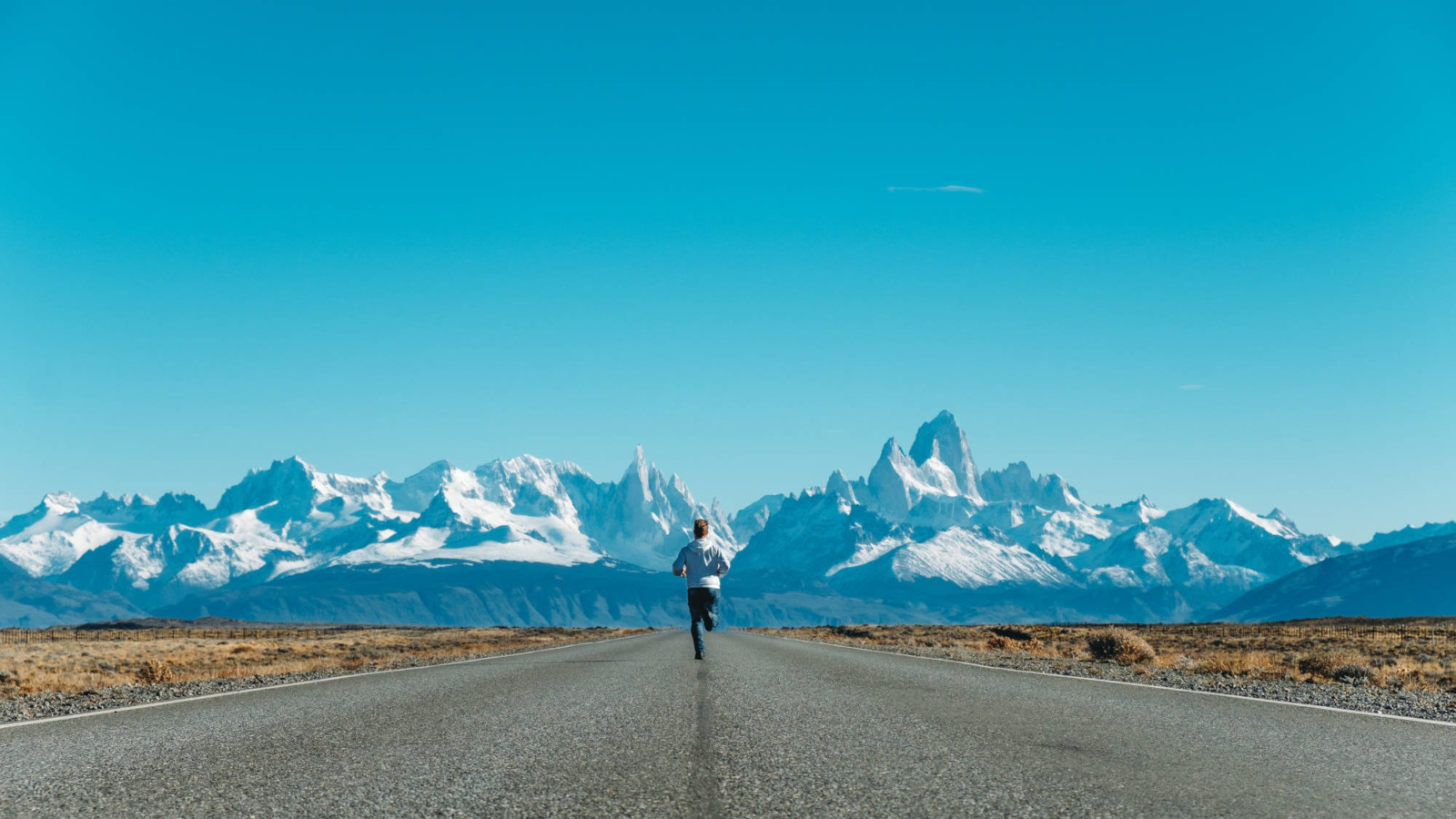It is 10:30 AM in the morning. The sun is comfortably sitting high in the sky, but it is not hot yet. You’ve left your kid at a summer camp and you’ve finished the most burning tasks at work (thank you global pandemic!) You put on your running shoes, tie them up, and go out for a 5k. You come back, take a shower, and you sit in front of your home office monitor to tackle the onslaught of meetings, just when your West Coast colleagues are waking up. They keep wondering why you have so much energy in these stressful times …
This article describes how I gamified myself into developing a running habit. As always, I will share a few books and tips for everybody else. Continue reading, if you can picture yourself as the main character in the story above.
Time to read
Time to read: 12 minutes (based on 150 works per minute).
Introduction to running
“Every morning in Africa, a gazelle wakes up. It knows it must outrun the fastest lion or it will be killed. Every morning in Africa, a lion wakes up. It knows it must run faster than the slowest gazelle, or it will starve. It doesn’t matter whether you’re a lion or a gazelle—when the sun comes up, you’d better be running.”
Roger Bannister
I have always kept the quote above in the back of my mind. There is something very natural about running and humans. Yes, it is hard, this is why most people avoid it. But it is also addictive. Ask any runner and they can speak hours and hours about how great it feels to run. I always suspected that it is because of our genetics. That running is in our genes. I am not an expert on this, but Christopher McDougall dove deep into this subject in his book Born to Run (link to Goodreads). He claims that we, humans, are born to run. And he follows with a lot of personal stories about runners and scientific evidence.
In this article, I am not going to talk about any of these. If you follow my blogs (and soon if you have read my book), you know that I am a firm believer in habits and gamification. I believe that with games and play you teach yourself to do almost anything. In the following paragraphs I will show you how I used this power for adopting a running habit.
Why is not everybody running?
Running (or jogging or however you decide to call it) is the classic topic of habit formulation. As we already established, it is hard! Why would a sane person prefer running outside (up and down hill) for multiple minutes and maybe hours over sitting comfortably in their couch and watching movies? This is what most people would say. Why would a sane person NOT prefer running over movies? This is what every runner says. Let me quote a paragraph from Born to Run:
“One Saturday, Ann got up early and ran twenty miles. She relaxed over breakfast, then headed back out for twenty more. She had some plumbing chores around the house, so after finishing run No. 2, she hauled out her toolbox and got to work. By the end of the day, she was pretty pleased with herself; she’d run forty miles and taken care of a messy job on her own. So as a reward, she treated herself to another fifteen miles.
Christopher McDougall
Ann Trason is one of the best ultrarunners in the world. I am not suggesting that you follow her example. All I am saying is that there must be something in running which makes people feel so great.
The benefit of this article is an easy to follow process for experiencing the joy of running. You will not become an ultramarathoner or a runner. I am not a runner myself. But if we allow ourselves to feel a tenth of a percent of what Ann and the other runners are feeling, it will be worth it.
My personal story on running
Running has always been a dream to me. But, like most people, I was always finding excuses, being lazy, or just not having enough time. Well the global pandemic of 2020-21 put an end to most of my excuses. I was home, the whole day, and I found myself, like many others, struggling to move enough. This is when I picked up running. In a normal pre-pandemic day, I would commute 40 minutes to work, park my car, and walk 15 minutes more. Instead of lunch, I would go out for a walk (or go in for a walk around some mall in the winter, because I live in Canada). All this summed up to about 10,000 steps a day. How could I replicate that?
In the spring of 2020 I found myself working longer hours than when I was in the office (no commute, lunch in front of the monitor, no picking up my kid from school). I started with running around the house. I had developed a technique for running around the house long ago (more details here), which I now perfected. It took 125 laps around my two bedroom apartment and 40 minutes to run a 5K (5 kilometers). I could listen to a podcast while I was running, take a shower, and get back to work.
I was doing it barefoot, which as it turned out was the right way to teach yourself proper technique. Then, I switched to outdoor running in the summer and fall. Back to indoors for the summer and since Mar 2021, I have been running outside.
How can you gamify running?
I used the classic formula (cue – routine – reward, more info here) for habit formation and I gamified the experience by adding rules to make it a flow-like activity (I hope you have read the book Flow – link in Goodreads). Finally, I used an instant feedback loop after every run to reinforce the habit.
Step 1: Define the cue
The cue is something which triggers your habit. Make time for running in your calendar. I suggest sticking to one hour, because it can be hard to free more than that. Block this one hour in your work calendar and add a reminder.
When the time comes, change your clothes. I would change even while I was running home, because this is part of the whole experience. Then, put on your shoes (or take off your socks if you are running home). And go for it.
Once again, I am not an expert, but running barefoot is the best way to tech yourself to run properly. Most people step on their heels when running, which leads to make injuries. But if you run barefoot, you cannot afford to step on your because it hurts (try it). If you don’t trust me – read Born to Run and other similar books.
Step 2: Make it pleasant
After you have adopted the habit you will be able to just run outside, listen to the sounds, watch the scenery, and just enjoy. But until that you will need a distraction. To me, this distraction was podcasts or phone calls. In 2020, I listened to everything from Tim Ferris, Brene Brown, Adam Grant, HBR Idea Cast, Bill Gates and Rashida Jones, Angela Duckworth, and Arianna Huffington. Some of these podcasts are 20-25 minutes, others are longer than an hour. You can listen to a longer one in two sessions or cover two shorter ones in one. Up to you. Alternatively, find any other way to distract yourself – music, talking with somebody on the phone.
It turns out that the best rhythm for running is as fast as you can keep up while talking to someone. There are complicated formulas to calculate the optimal heart rate for running, but this rule of thumb is the best.
Step 3: Reward your efforts
To solidify the habit, you will need a small reward in the end (and something else, but we will get there). For me, at least initially, this was the shower. I would take a shower after my run and I will feel renewed, ready for the challenges of the work life (I was running during the day). This step is very personal and it is absolutely up to you what the reward will be.
A few things that I would avoid are: sweet treats, chocolate, candy. It kinds defeats the purpose and you also want to influence a more healthy lifestyle once you start running.
Step 4: Track your performance
In a 5k run you have five splits of one kilometer each. For each run you can measure: total time, average heart rate, time for each split, pace (minutes per kilometer), speed (kilometers per hour), stride (steps per minute). I personally used an app for this, but I am not going to tell you which one. It does not really matter, at least not in the beginning. I would track each of my runs and diligently enter the data into an excel spreadsheet.
Step 5: Define rules
Now comes the interesting part. In order to make an ordinary experience (like running) into a flow experience, you will need to make it a game with challenging rules. You can push yourself to run more or faster, but for a newbie like me this takes time. So this is why I invented the “Tin Coefficient”. For every run, I would try to run the fastest total time, keeping my average heart rate below 117 (I came up with this number myself, but you can find formulas everywhere). 117 was the heart rate at which I can talk and run. And I would try to be consistent in every split (i.e., having minimum different between max split and min split).
The Tin Coefficient equals the total time + (avg heart rate – 117)*3 + (max split – min split)*10. This way I “win” if I run with consistent pace and low heart rate for the fastest time.
Disclaimer: I am not an expert or a doctor, follow these rules and numbers at your own risk.
Step 6: Close the feedback loop
And finally, make all that a feedback loop where you can test something new every run and get instant results. This way I tested the best runners’ advice to not land on my heels. I tested different ways to go up and down the hills, so that I can keep my heart rate low and my pace uniform.
My future goal is to start running 10k-s, which will be fun, because I have a lot of data from my 5k-s, but nothing from anything longer.

One Action
If you have made it thus far, then you are ready to commit to one action: Book time for a run each week for the next four weeks. Add a reminder, block your calendar. Then, choose the reward and keep it for after you have done the run. Don’t worry about tracking and rules and stuff, just do those four runs. Don’t overstretch yourself. You can do several minutes or even one minute. Then see how you feel.
Summary
You were born to run and running helped your ancestors survive, but in the modern society you don’t run to get food. Instead, try to run for joy and for good health. If I made you commit to the one action above, then I am happy with the impact of this article.
Originally published on: https://www.fromgnometogoliath.com.


